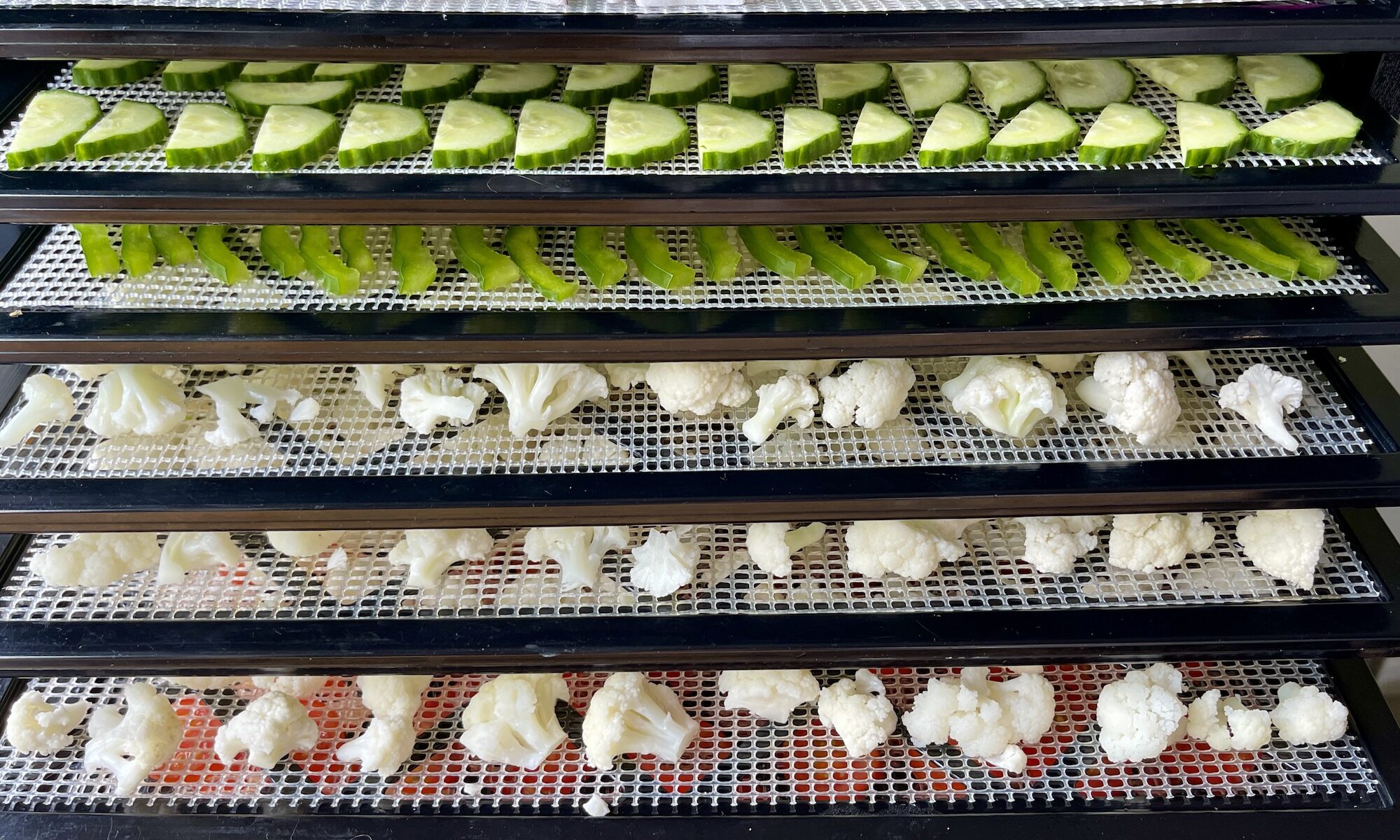Dehydrating vegetables is a fantastic way to preserve their nutritional value and make them perfect for backpacking meals. With a few exceptions, most vegetables should be blanched or steamed before being dried in a food dehydrator.
Most vegetables dry best at temperatures between 52°C to 57°C. And, there are so many more vegetables that can be dried in a food dehydrator beyond this list. Here, I’ve described the vegetables that I use the most when making my own trail mix.
Properly stored, dried veggies can last up to a year or longer. Some vegetables can be dried without pre-treatment, while others benefit from blanching or steaming to preserve their nutritional value, flavor, and texture.
Blanching
Blanching vegetables involves briefly boiling them in water and then transferring them to ice water to stop the cooking process. To blanch vegetables, start by washing and cutting them to the desired size. Bring a pot of unsalted water to a boil, place the vegetables in a colander, and submerge the colander in the boiling water for 2 to 3 minutes. Then, transfer the vegetables to a bowl of ice water and let them sit for another 2 to 3 minutes. Once the vegetables are cooled, remove them from the water and let them drain before placing them on the drying trays.
Steaming
Steaming vegetables is another effective method for preparing them for drying. To steam vegetables, start by washing and cutting them to the desired size. Place the vegetables in a steamer basket and steam them for about 6 minutes. Then, rinse the vegetables with cold water and let them drain in a colander before placing them on the drying trays.
Vegetables that require no pre-treatment
Canned babycorn
Canned baby corn is commonly used in Asian cuisine and does not require any pre-treatment. Simply rinse the corn thoroughly under running water and let it drain in a colander. Cut the corn lengthwise, and if necessary, crosswise to create pieces that are about 2.5 cm long. You will need one drying tray for two cans of baby corn (400 g per can).
- Temperature: 52 °C
- Drying time: 6-7 hours
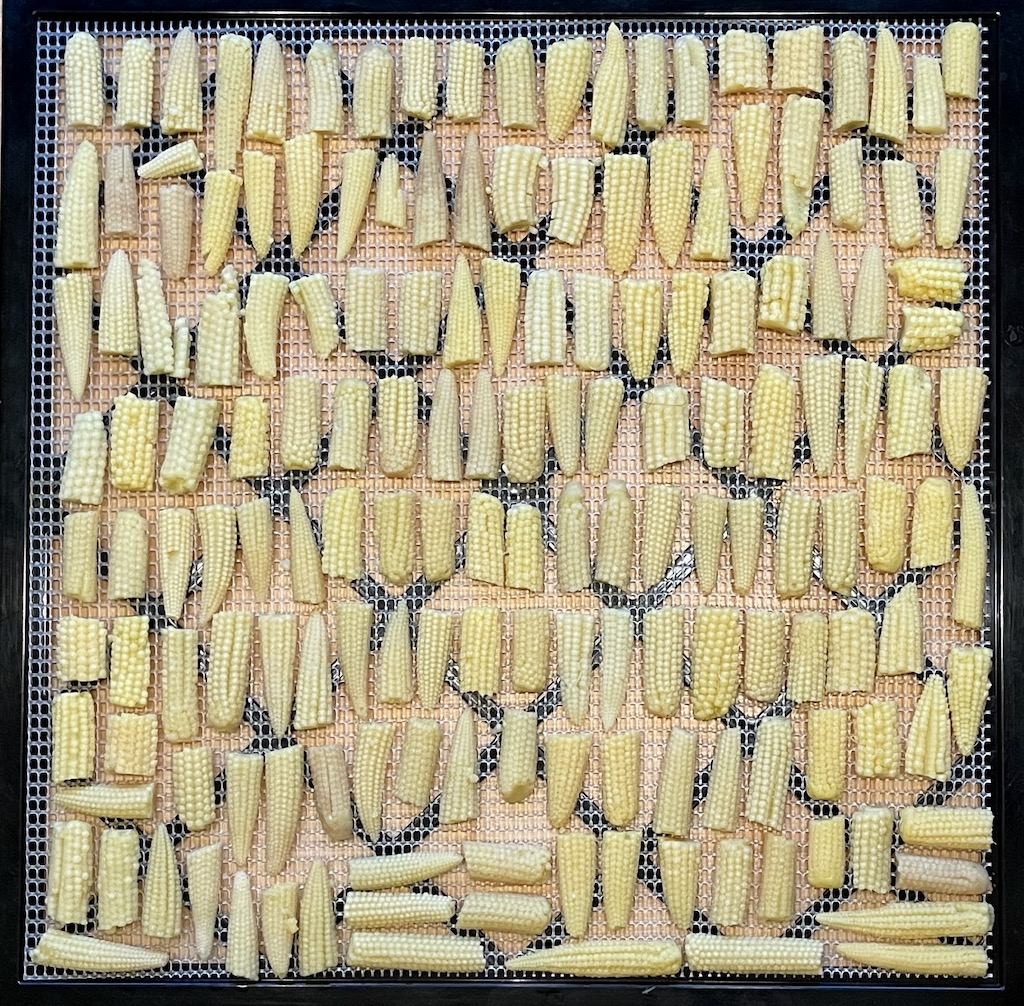
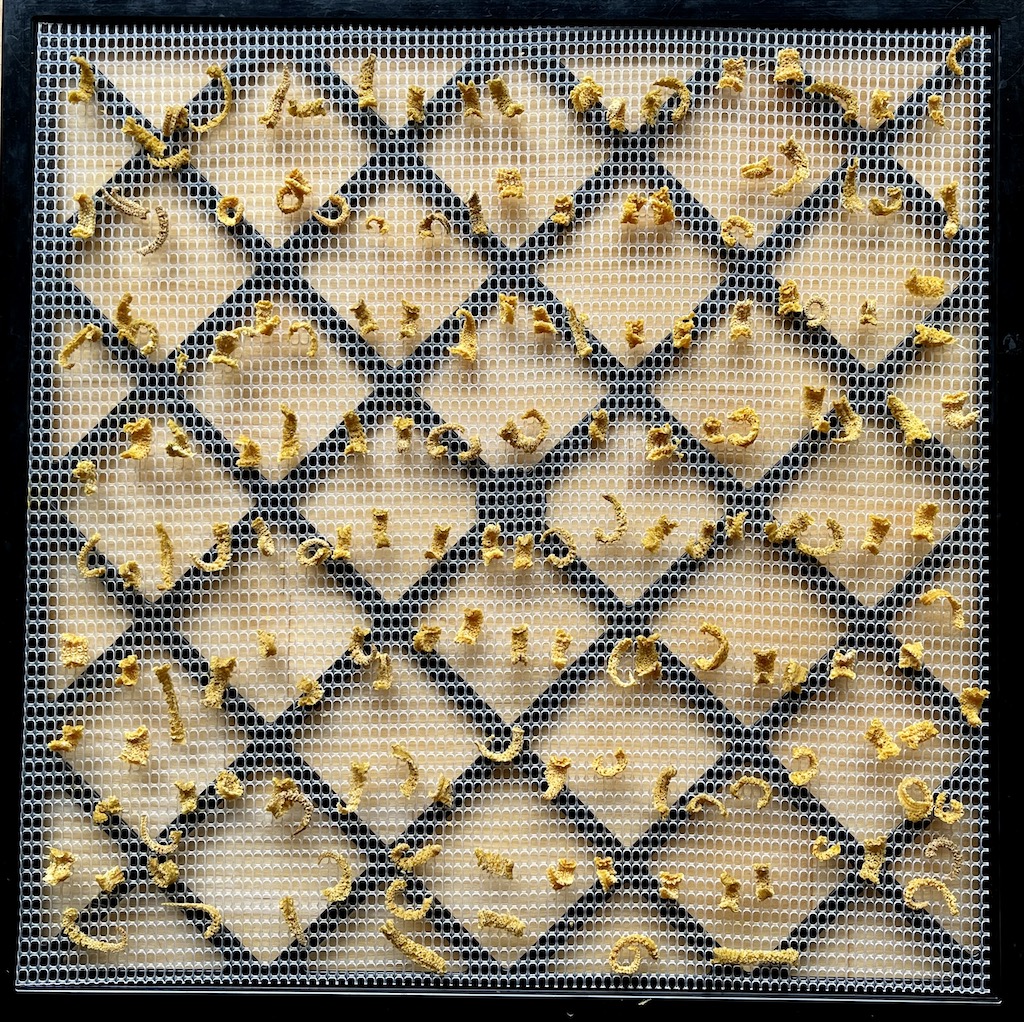
Bell pepper
Remove the stem and seeds from the bell pepper and cut it into 7mm strips. If desired, the strips can also be cut into two or three pieces.
- Temperature: 52°C
- Drying time: 6-11 hours
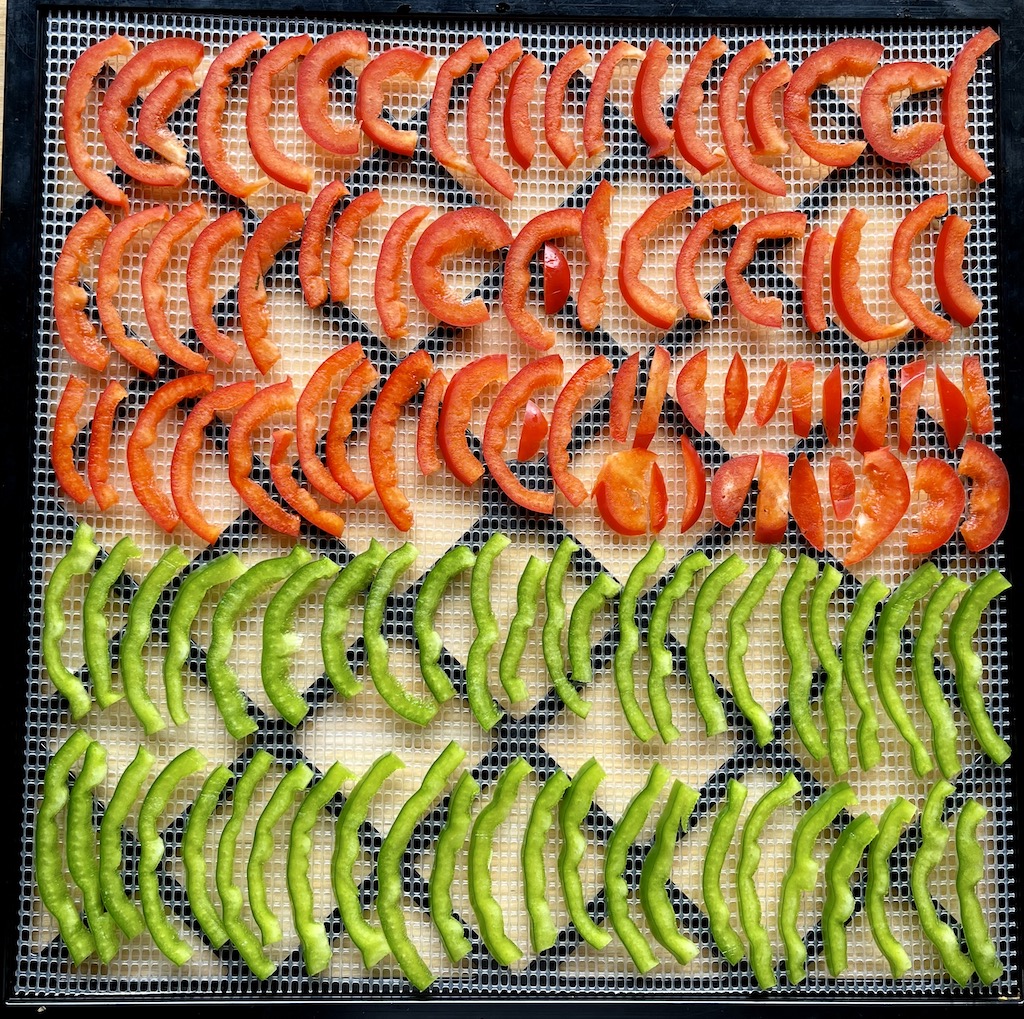
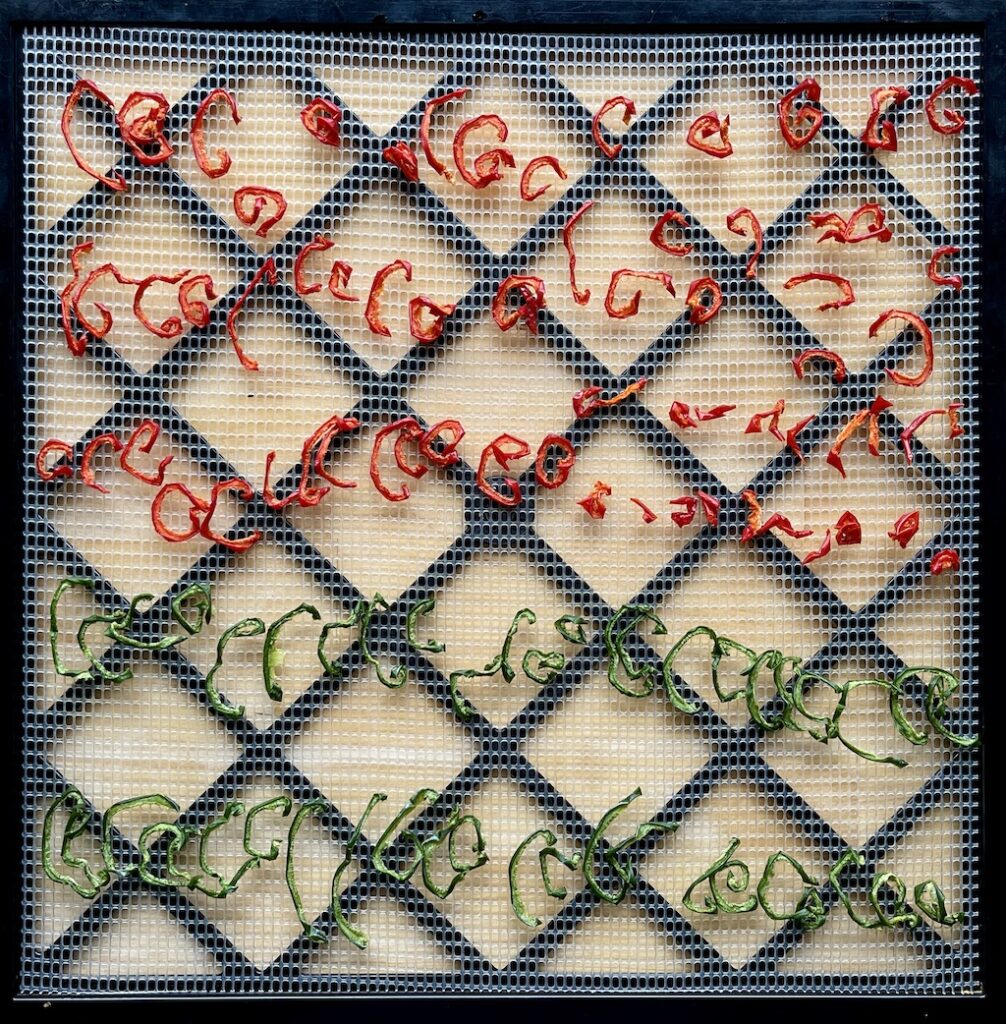
Cucumber
You can either dry cucumber in thin slices and use them as chips, or cut the cucumber into pieces for use in salads. For chips: slice into 3 mm thickness. For salads: slice into 5 mm thickness.
- Temperature: 52°C
- Drying time: 6-10 hours.
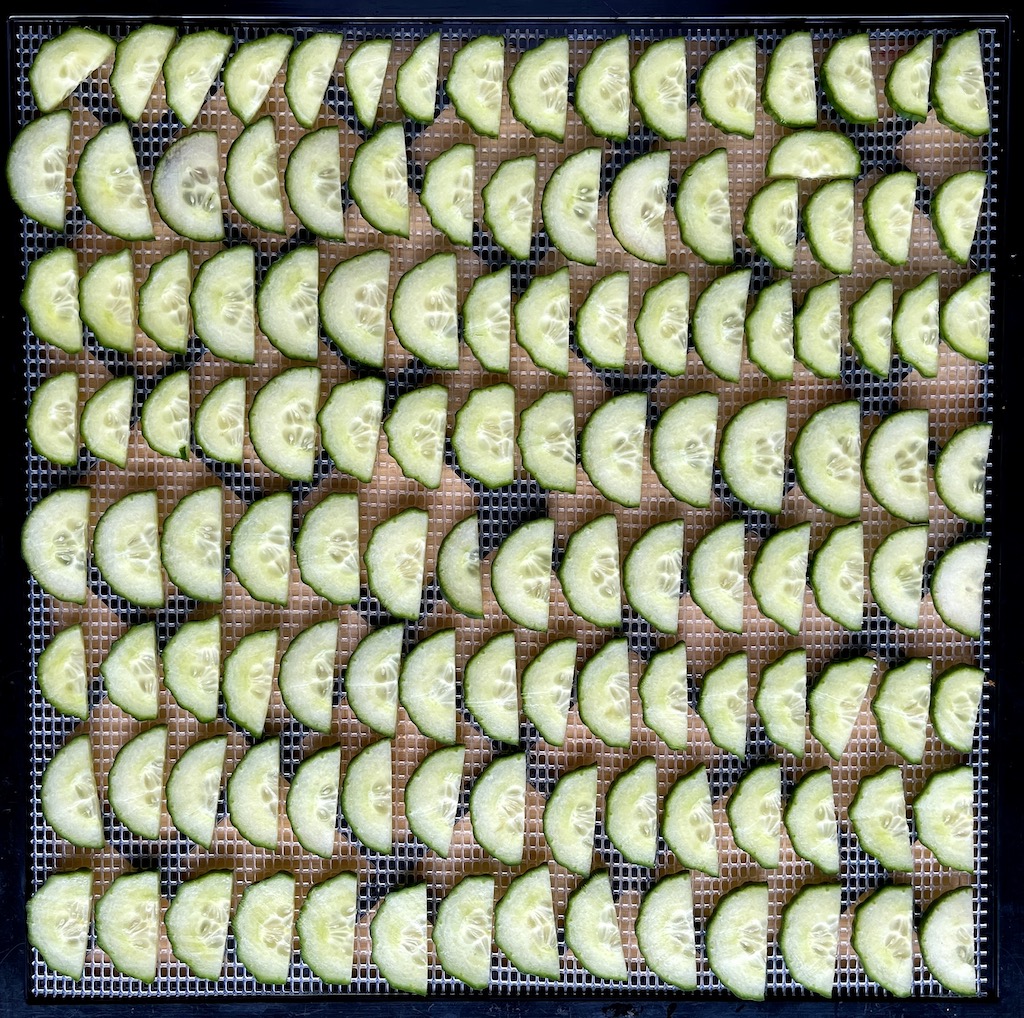
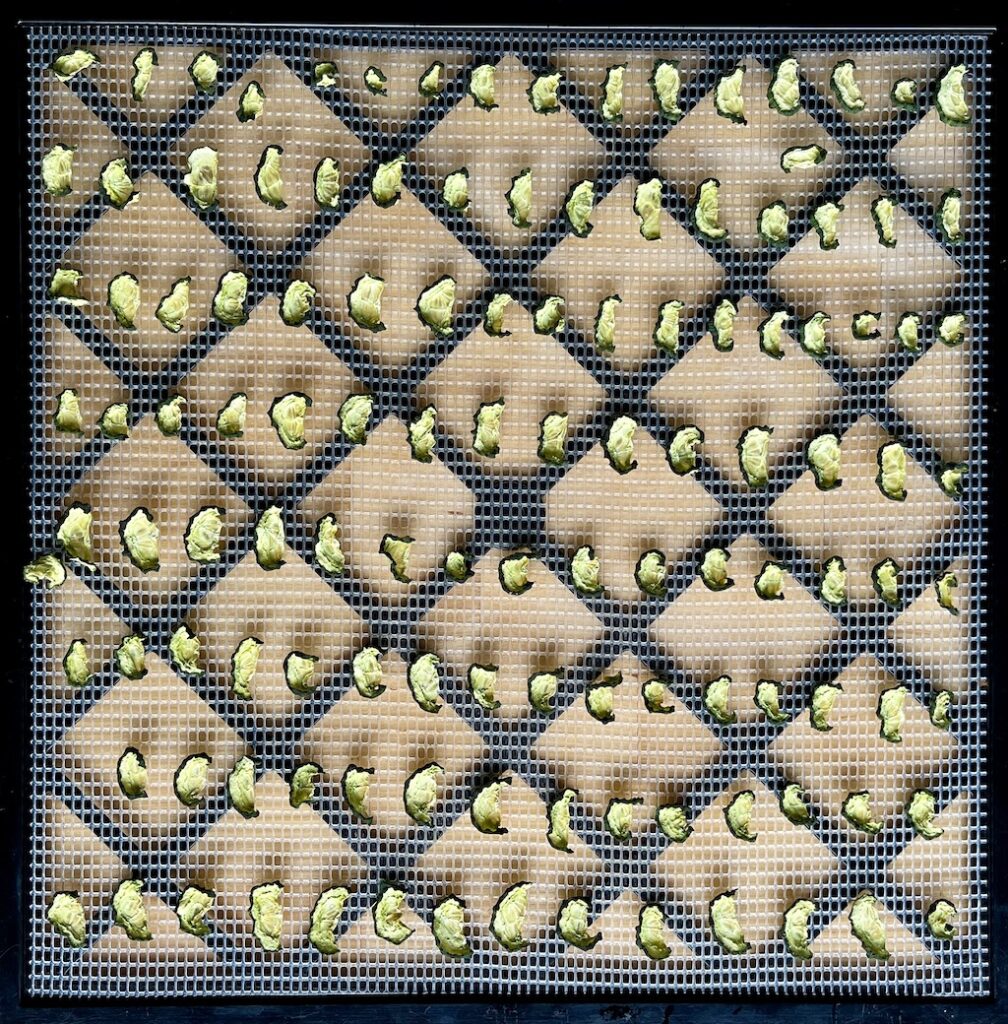
Onions
Peel the onion and slice it into rings that are 5-7 mm thick.
- Temperature: 57 °C
- Drying time: 4-12 hours
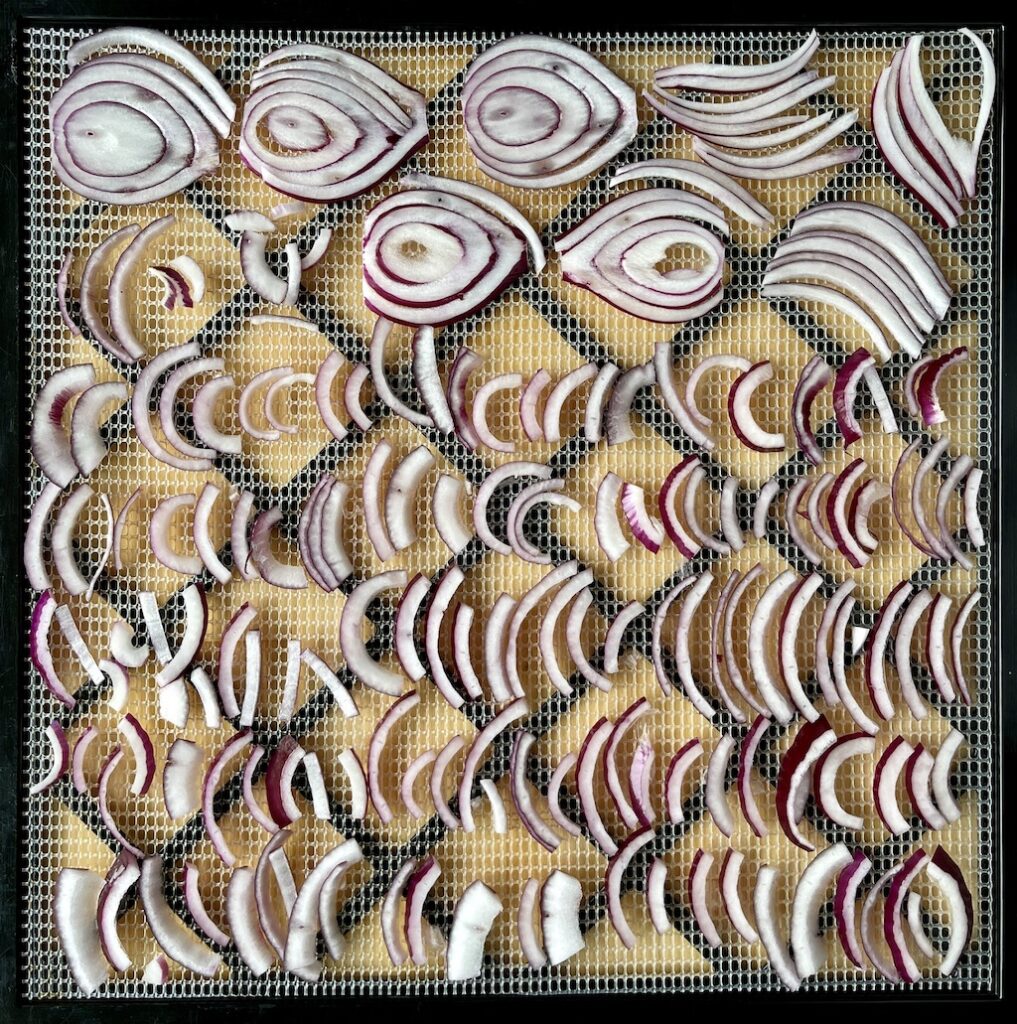
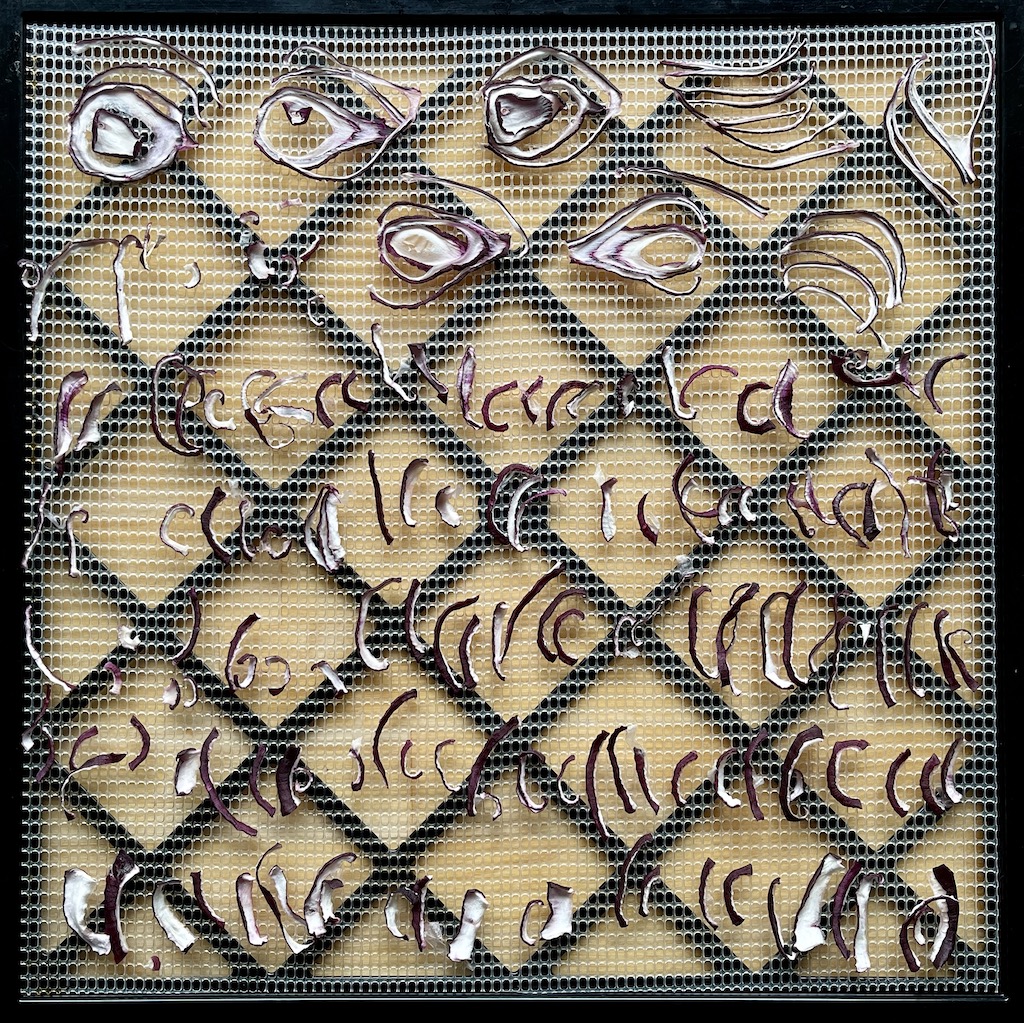
Mushrooms
Slice the mushrooms into 4mm slices (I use an egg slicer for this).
- Temperature: 50°C
- Drying time: 6-12 hours.
Tomatoes
Use ripe tomatoes for dehydrating. Tomatoes can be dried in both cubes and slices. Cut the tomatoes into slices of 1 cm and dice them if desired. It is difficult to specify the drying time as the moisture content of tomatoes can vary greatly. In the pictures below, you can see that I have sorted the tomatoes by thickness. The tomatoes on the first row required 4 to 6 hours less drying time than those on the second row.
- Temperature: 52°C
- Drying time: 8-24 hours
- The tomatoes er fully dry if they feel leathery or crisp
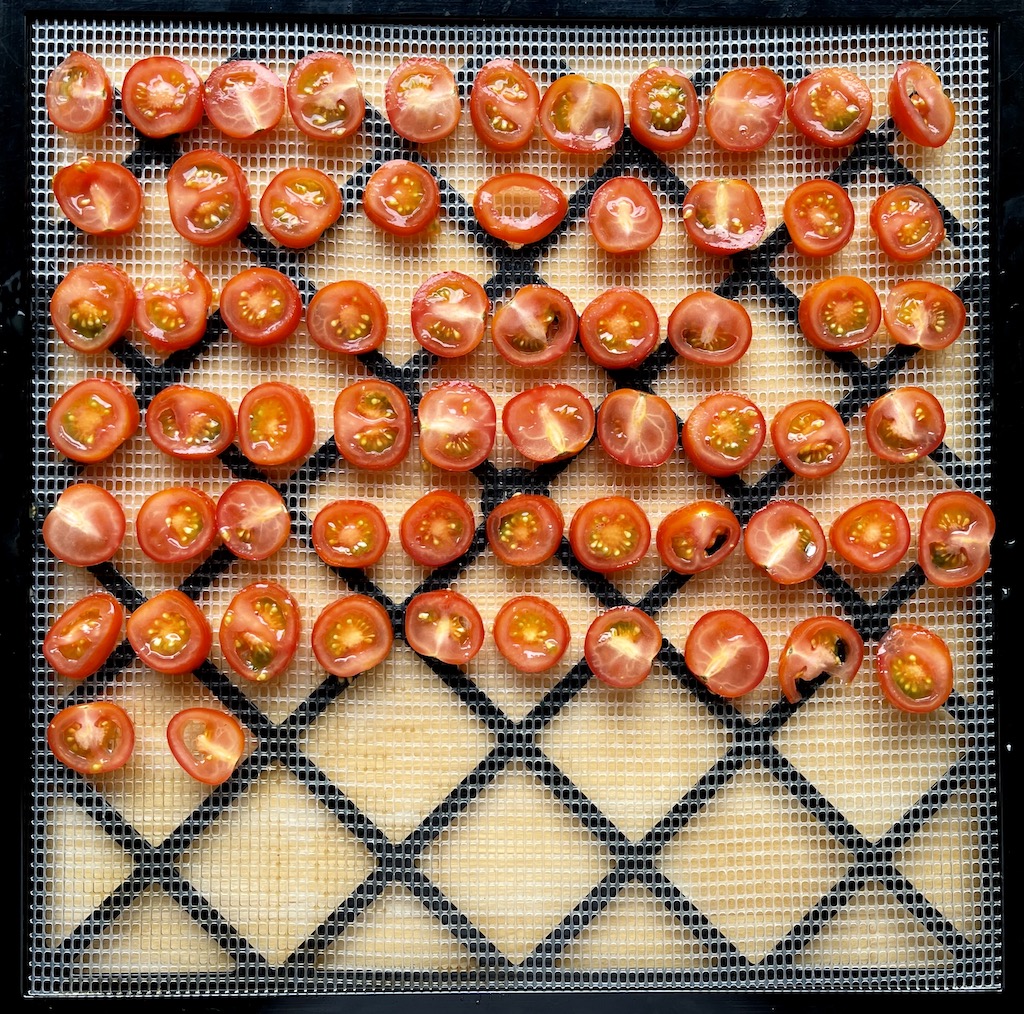
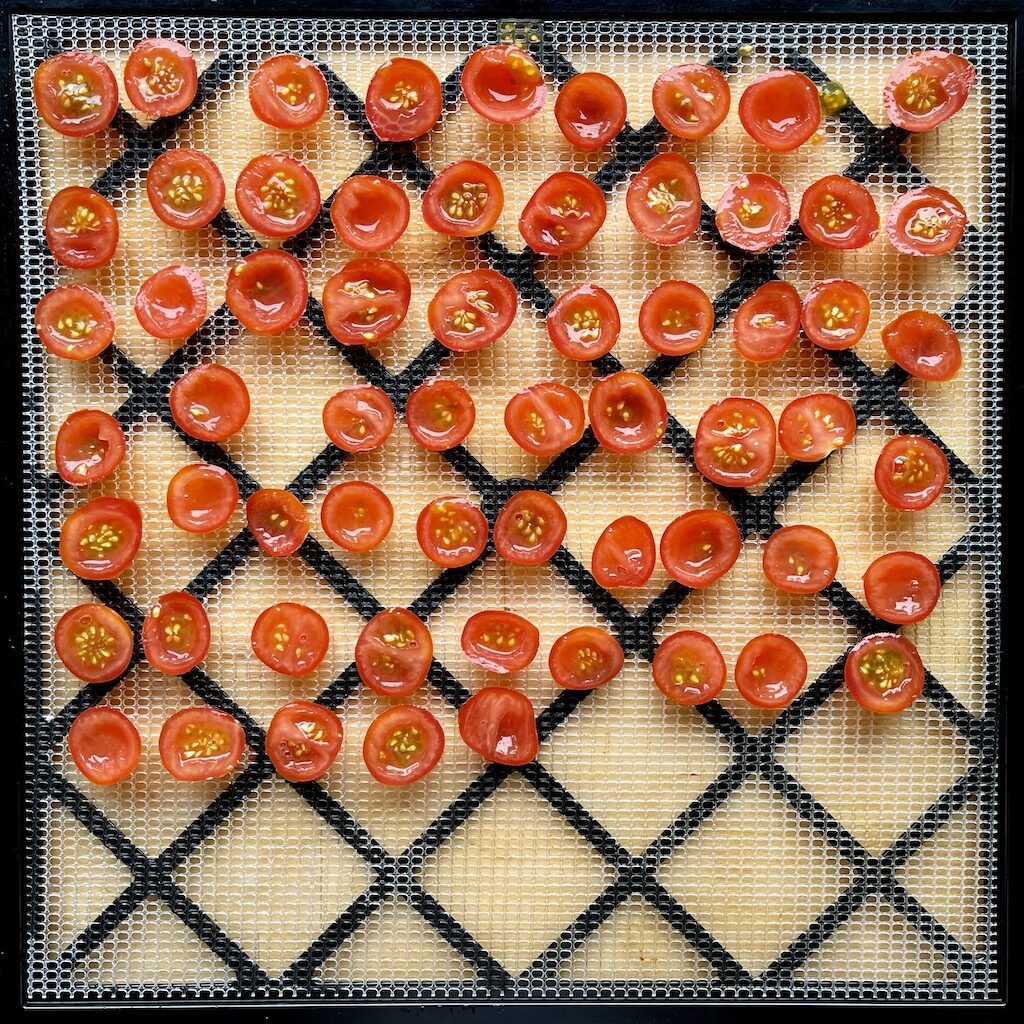
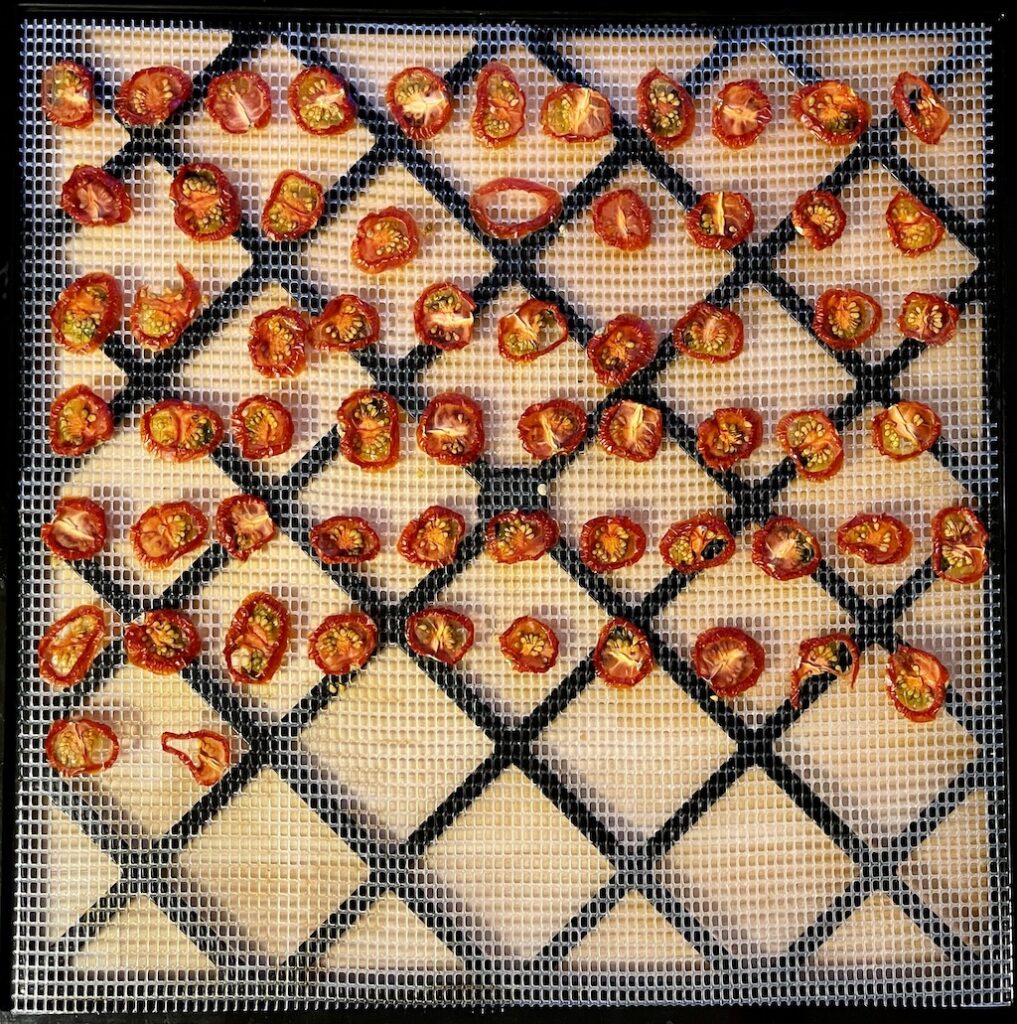
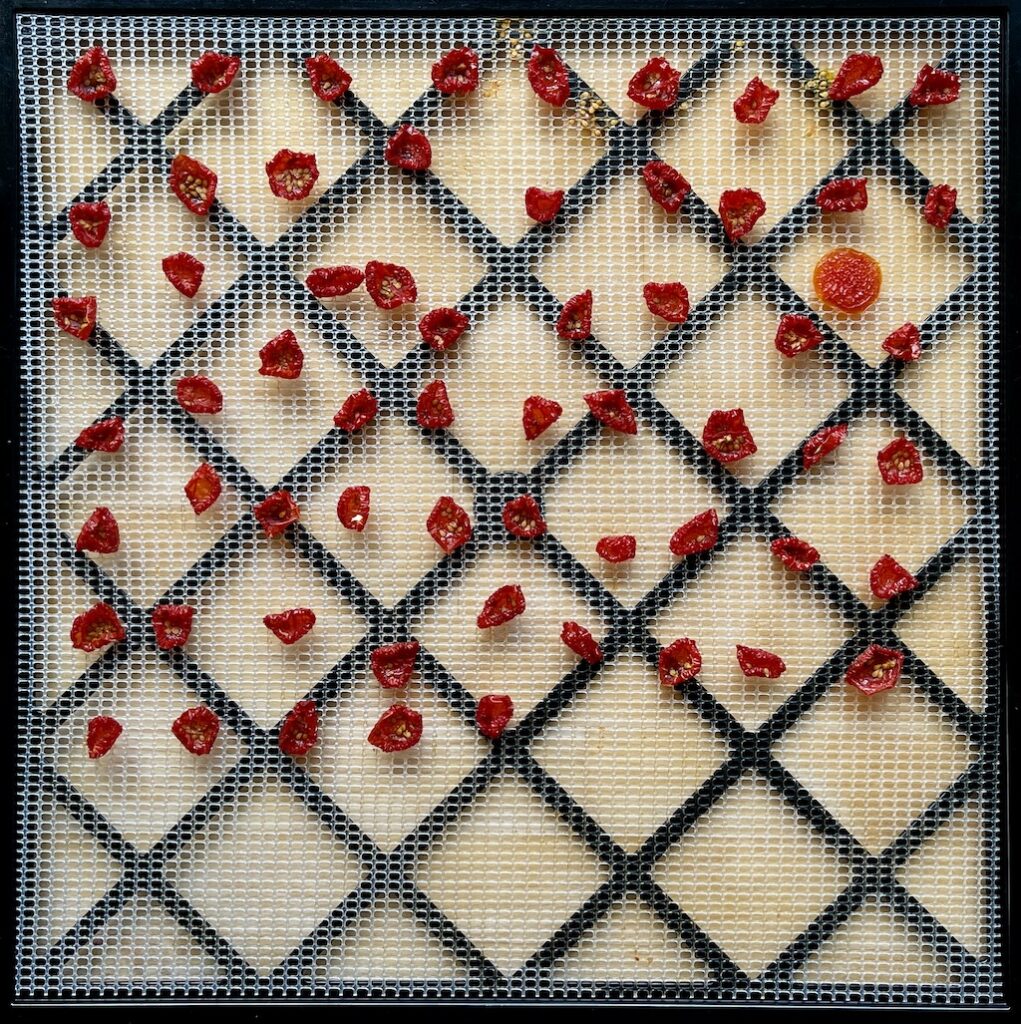
squash
Squash can easily be dehydrated with the skin on. Cut the squash into 5mm slices. The slices can be dried as is, but if you plan to use them in a stew, it’s better to divide them into quarters.
- Temperature: 52 °c
- Drying time: 7-10 hours
- Squash becomes crispy and can snap when fully dried

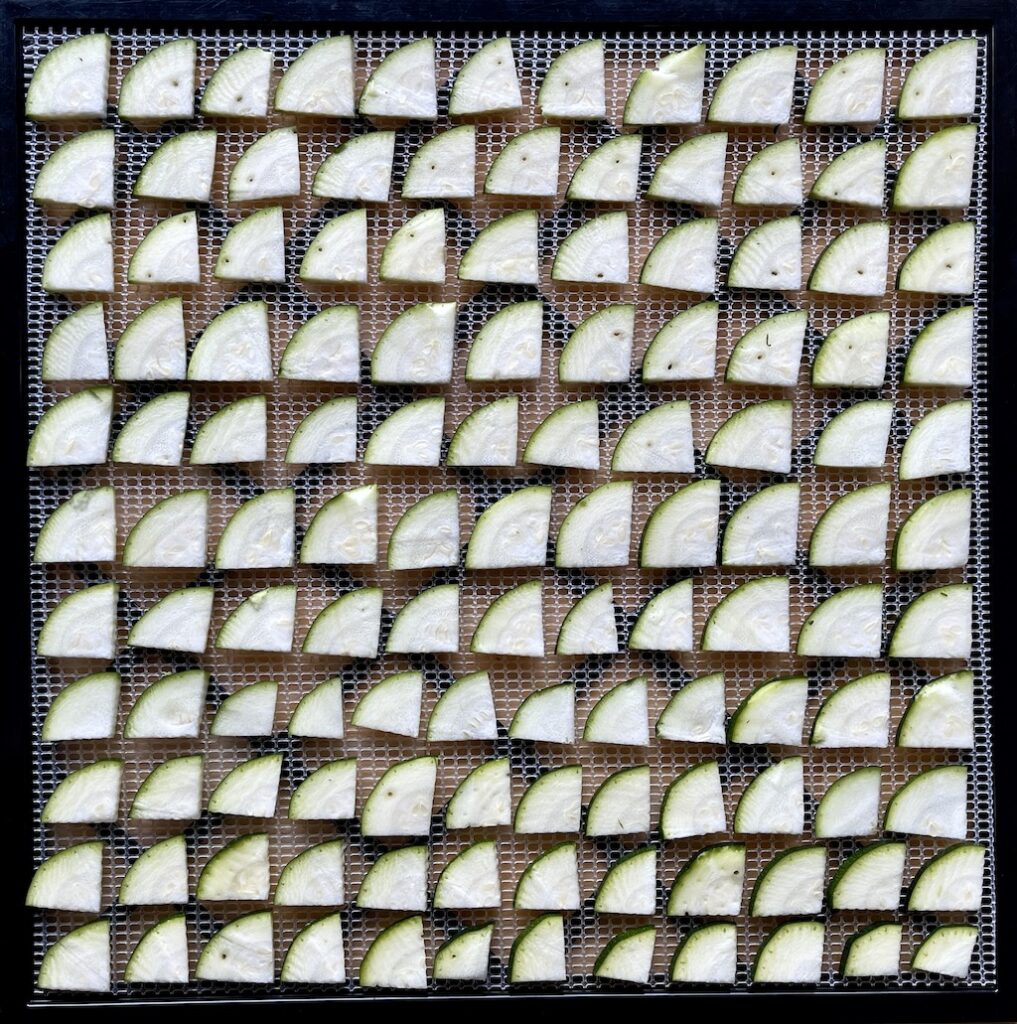

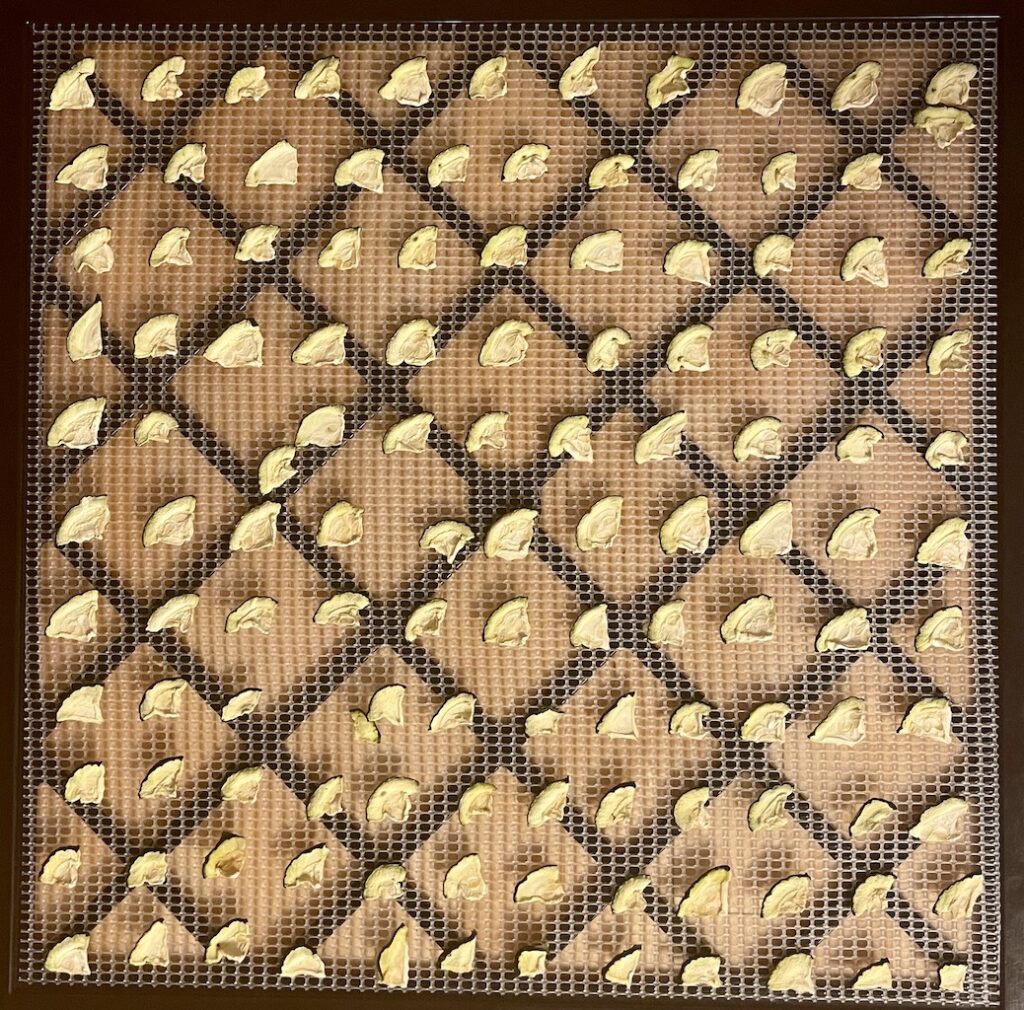
Vegetables that require pre-treatment
The following vegetables need to be blanched or steamed before drying.
Broccoli
Cut broccoli florets into pieces of 2 cm. Broccoli stem is not suitable for drying, but can be used to make broccoli soup (which can also be dried). Place a drying sheet on a drying tray at the bottom of the dehydrator to catch small broccoli pieces that may fall through the mesh of the drying trays. Blanch/steam before drying.
- Temperature: 52 °c
- Drying time: 6-10 hours
- Broccoli florets er crisp when fully dried
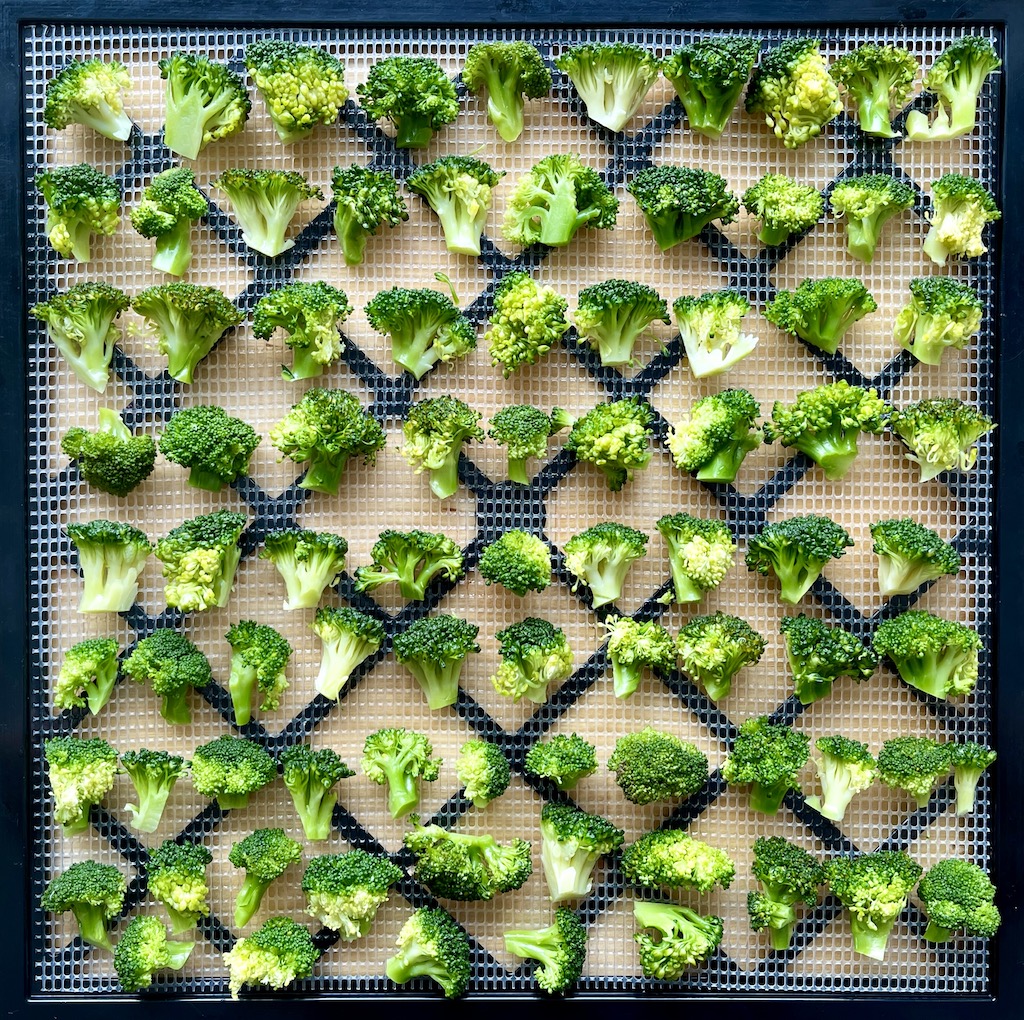
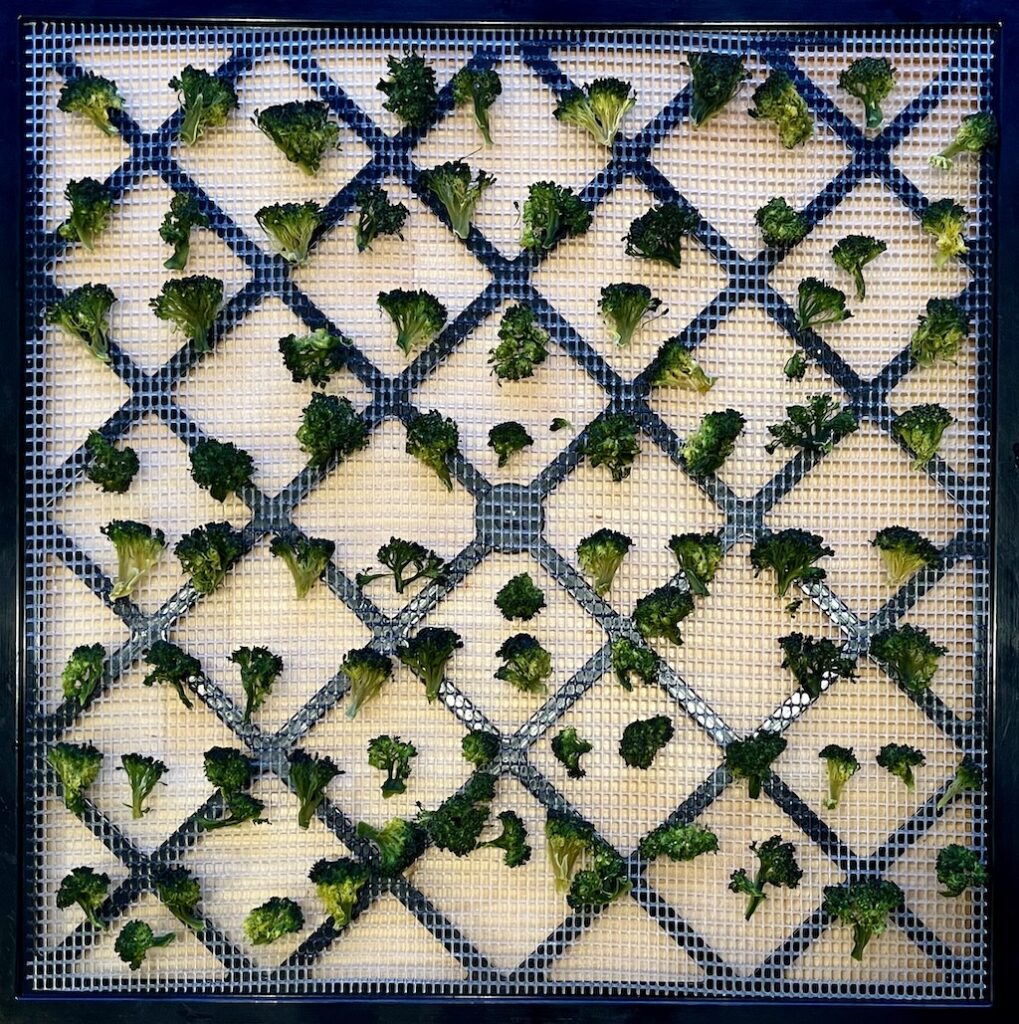
Cauliflower
Cauliflower can be cut into pieces that are 2 to 2.5 cm in size. You can also dry whole cauliflower florets. During the drying process, cauliflower takes on a different color (brownish-yellow), but it doesn’t affect the taste or quality. Blanching or steaming is necessary before drying.
- Temperature: 52°C
- Drying time: 6-14 hours
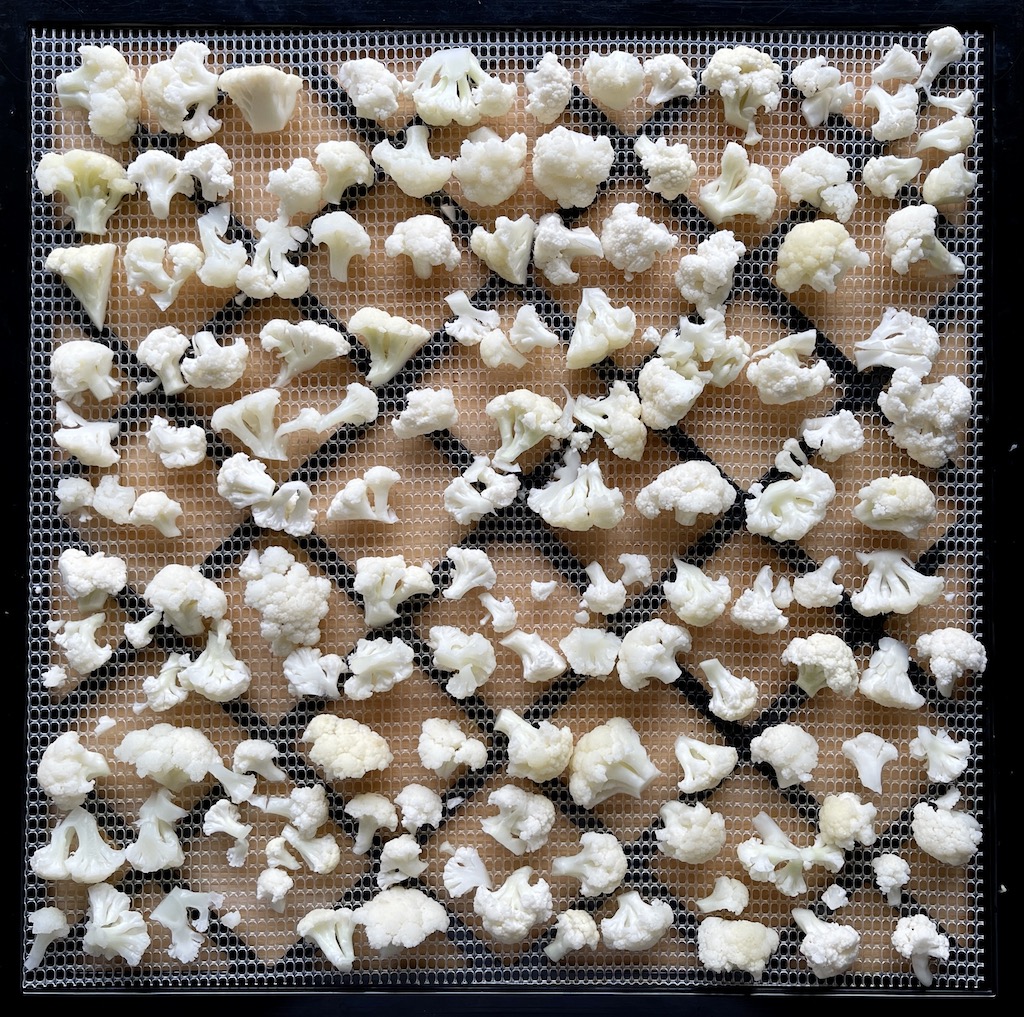
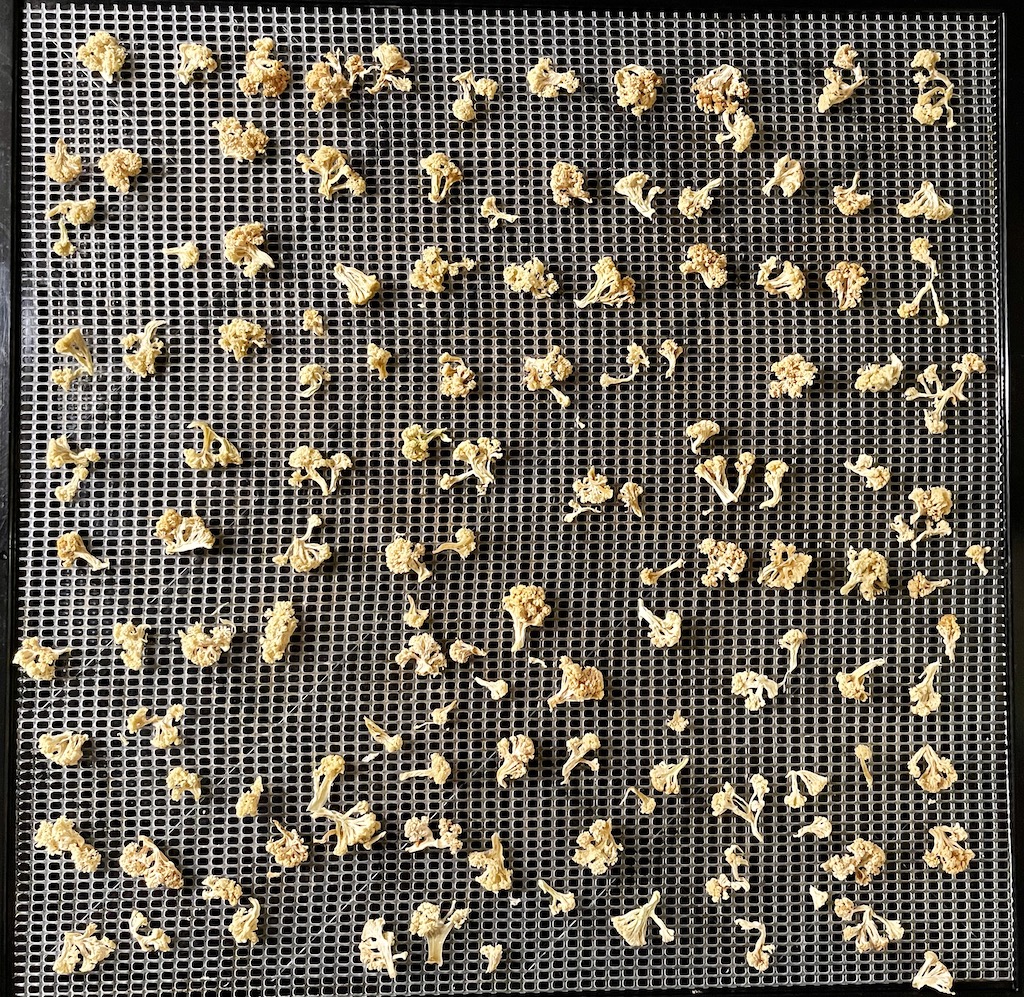
Brussels sprouts
Cut off the brown root ends and remove any brown or yellow leaves. Cut the Brussels sprouts in half. Blanch/steam.
- Temperature: 57°C
- Drying time: 8-14 hours
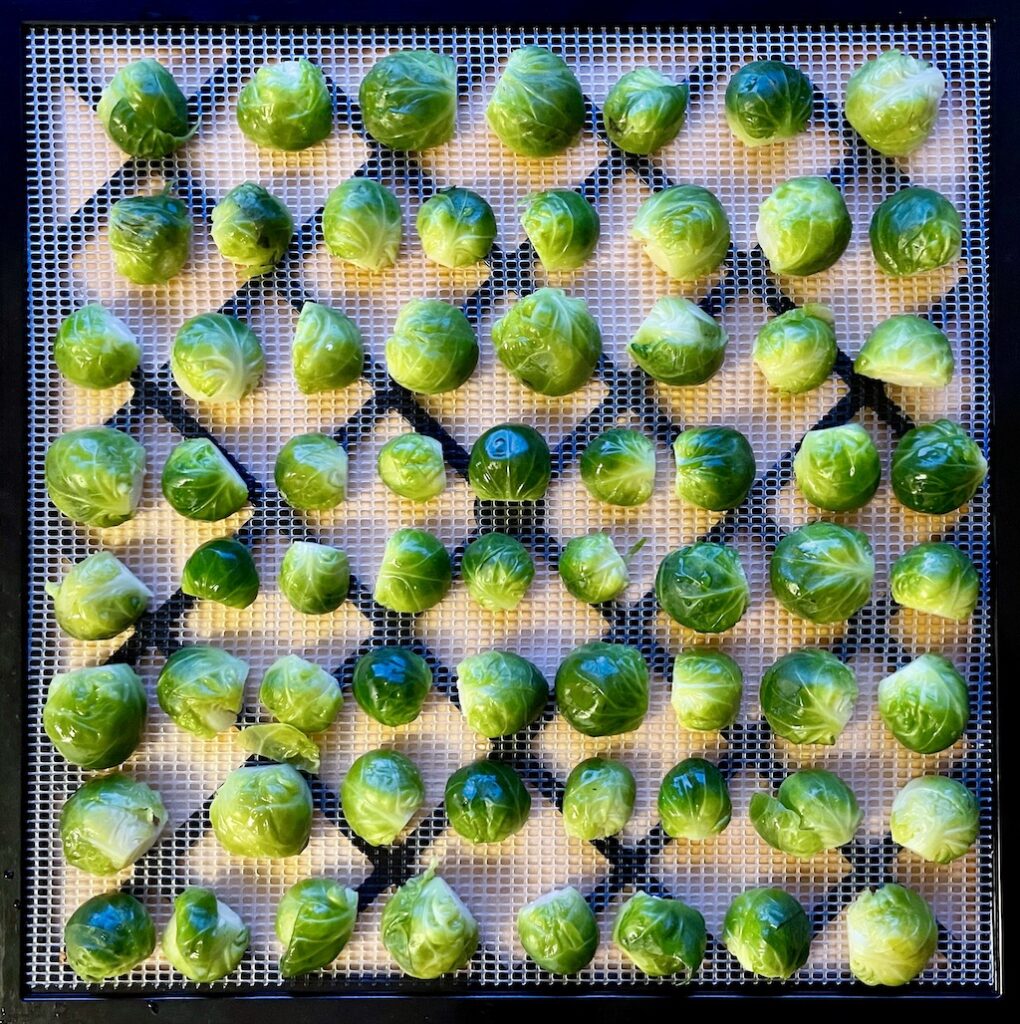
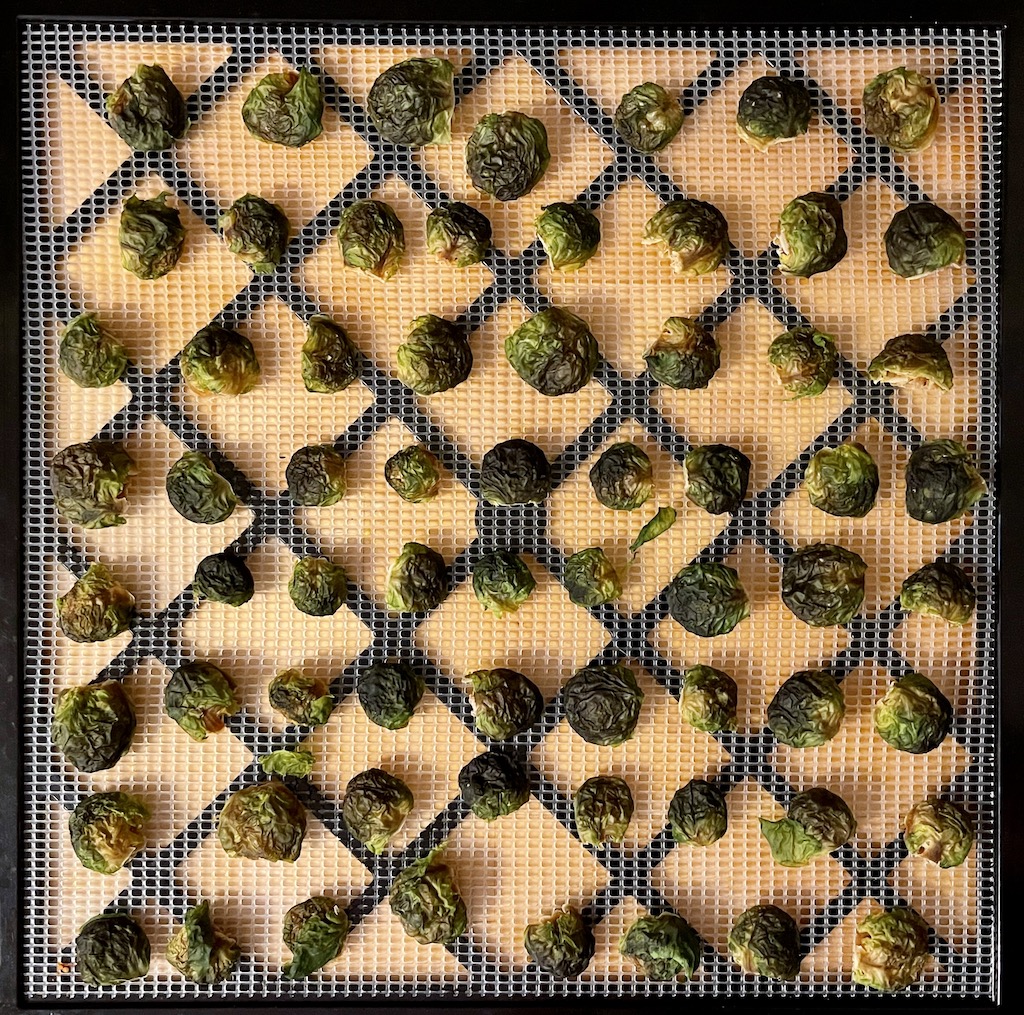
Celery stalks
Clean and cut celery stalks into 0.5 cm pieces. Blanch/steam.
- Temperature: 57°C
- Drying time: 6-8 hours
Asparagus beans
To dehydrate asparagus beans, rinse them and cut off the ends. You can divide the beans in half or into thirds if you plan to use them in a stew. Spread the beans out on a drying rack without overlapping them.
Blanch or steam before drying.
- Temperature: 52°C
- Drying time: 8-10 hours
- The asparagus beans are crispy and can easily snap when fully dried.
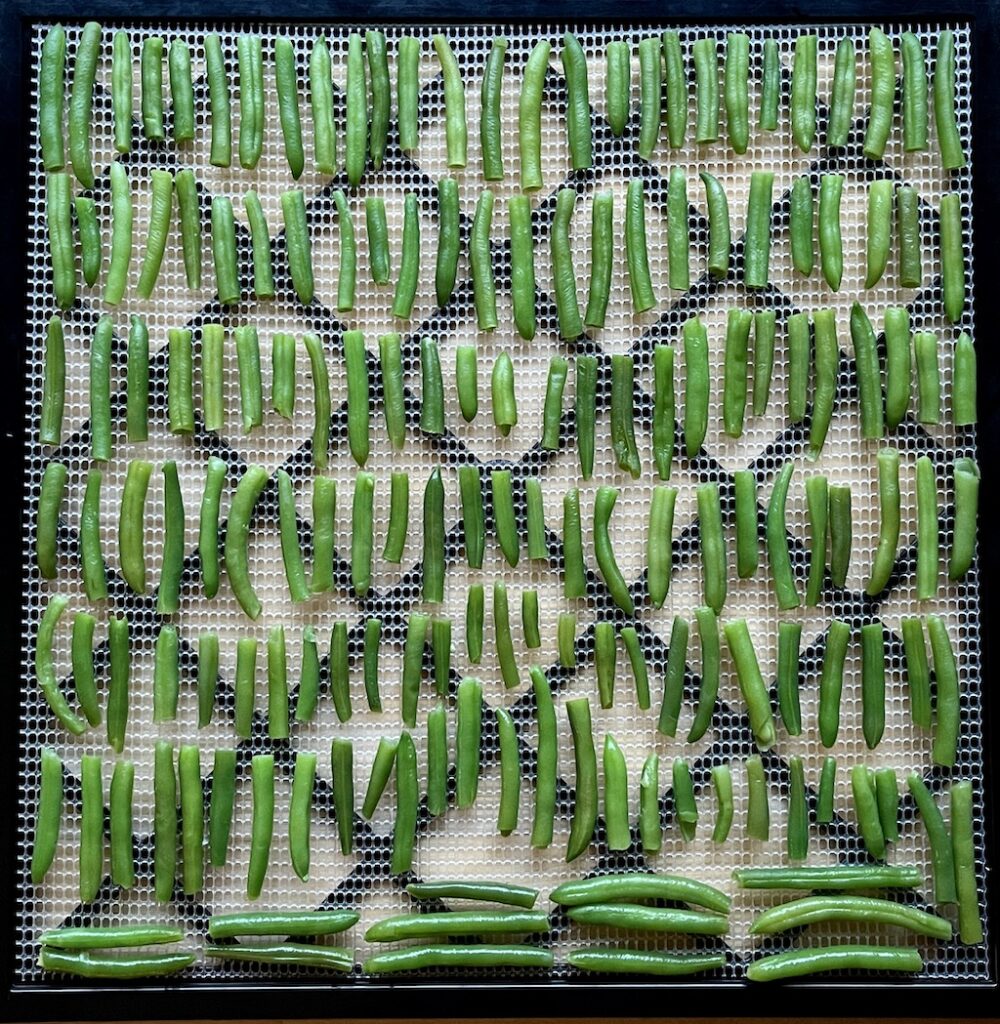
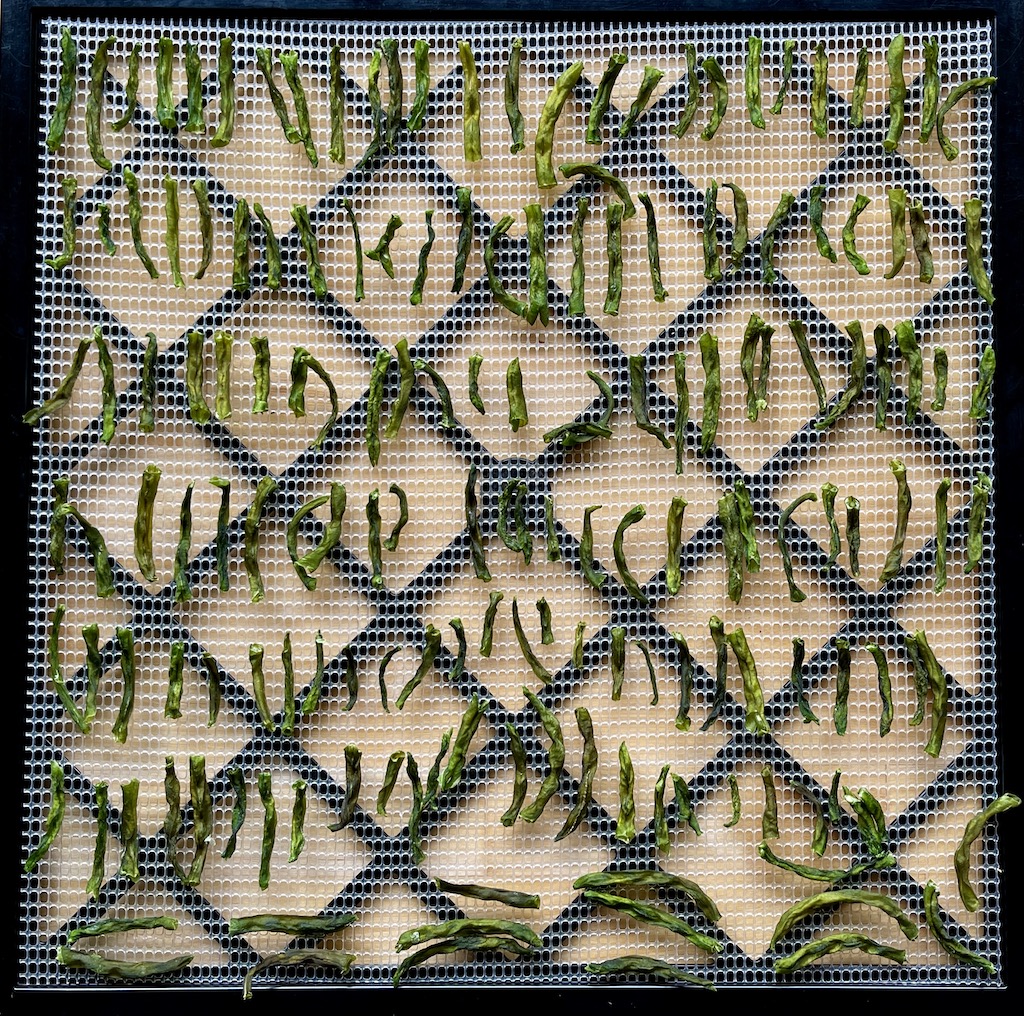
Carrots
Wash and peel the carrots. Cut the carrots into slices of 3 to 5 mm. You can also cut the carrots into julienne strips. Blanch or steam them before drying.
- Temperature: 57 °C
- Drying time: 6-10 hours
- The carrots become dry and brittle when fully dried, and should break easily instead of bending
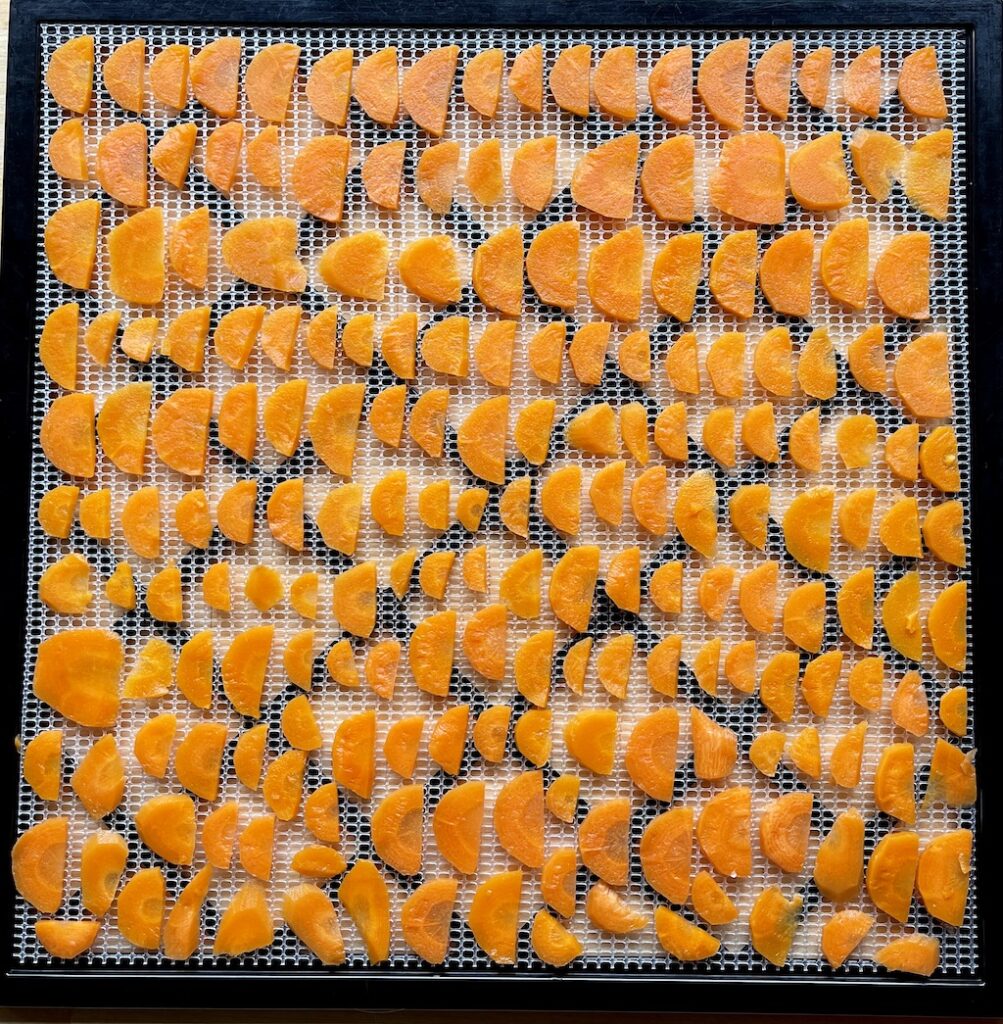
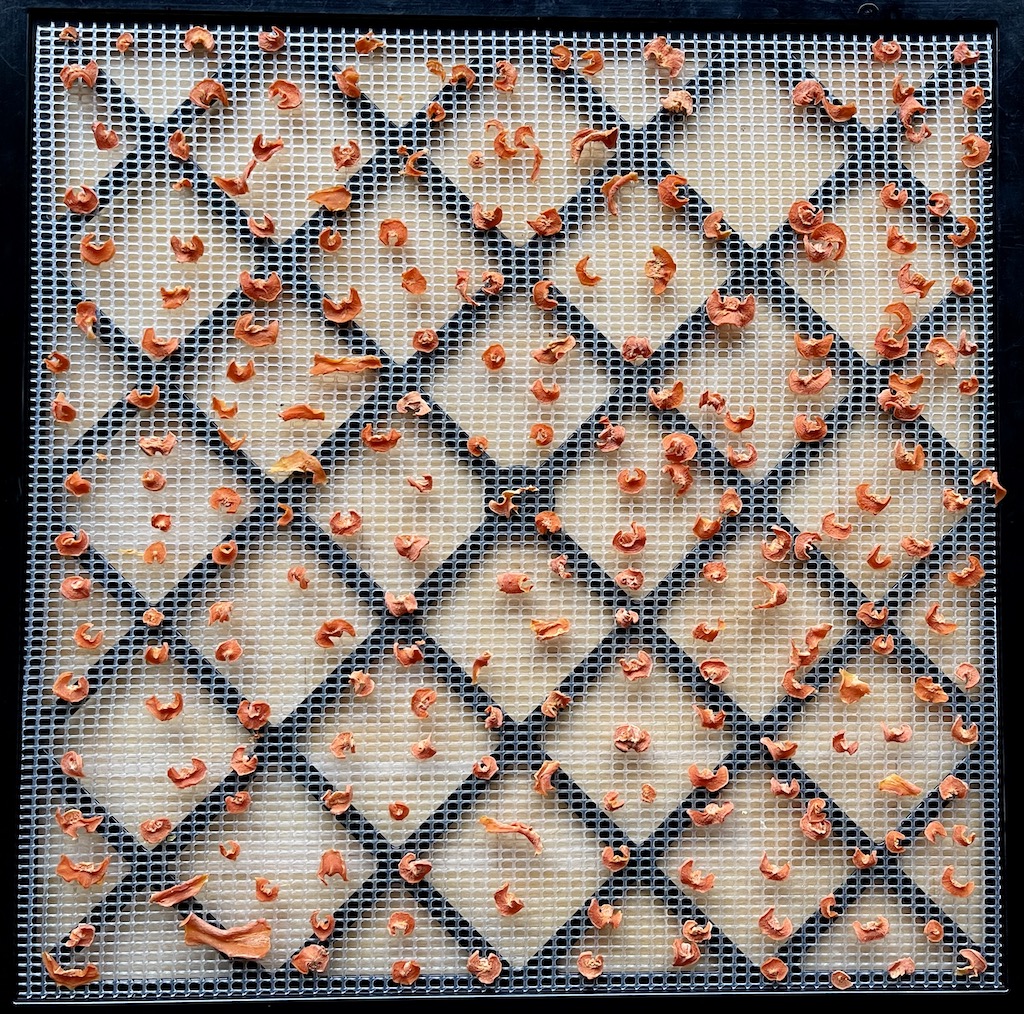
potatoes
There are several ways to dry potatoes. You can make mashed potatoes using broth and spread the mixture over a drying sheet.
Another option is to steam or boil the potatoes. In this case, I recommend placing the cooked potatoes in a strainer and rinsing them under cold water. Let the water drain off before slicing the potatoes into 1 cm slices.
When slicing the potatoes, it’s best to use firm potatoes and make sure the slices are not overlapping on the drying tray.
- Temperature: 52°C
- Drying time: 6-14 hours.
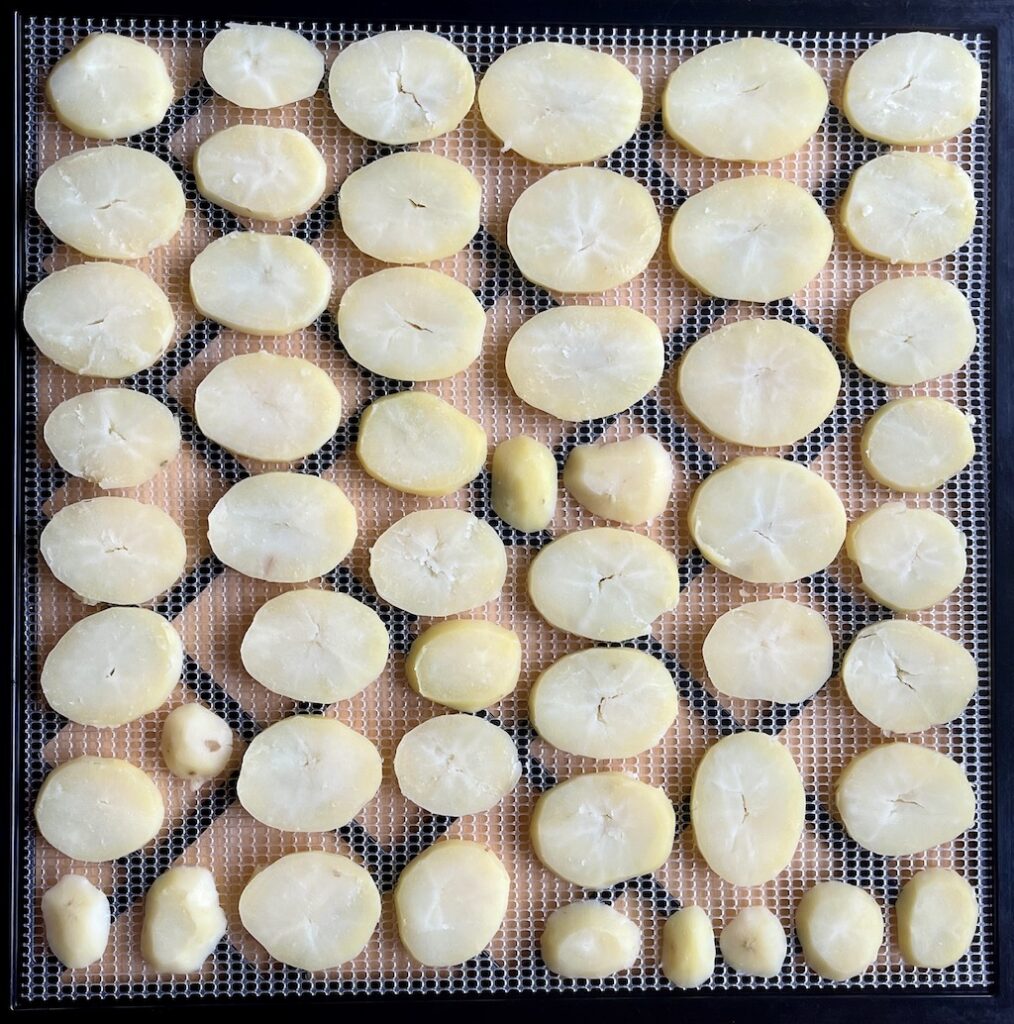
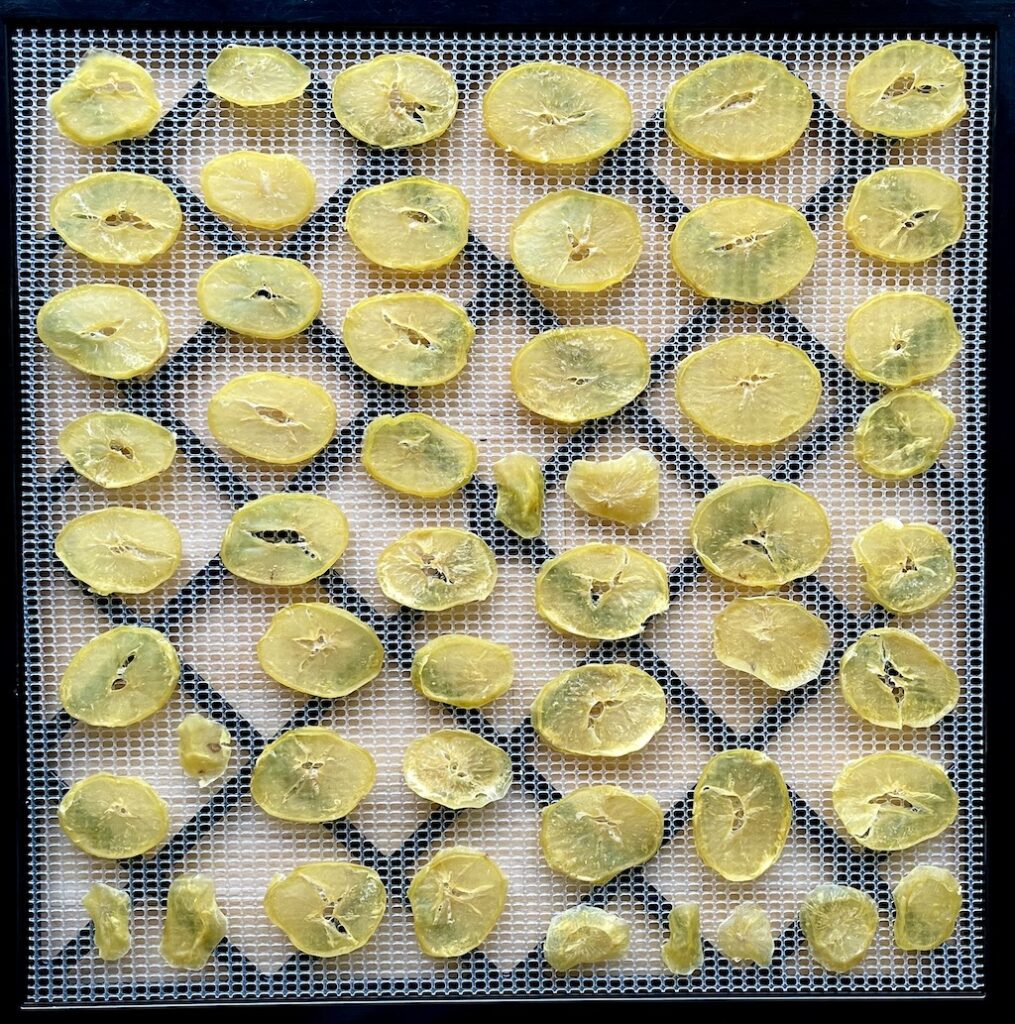
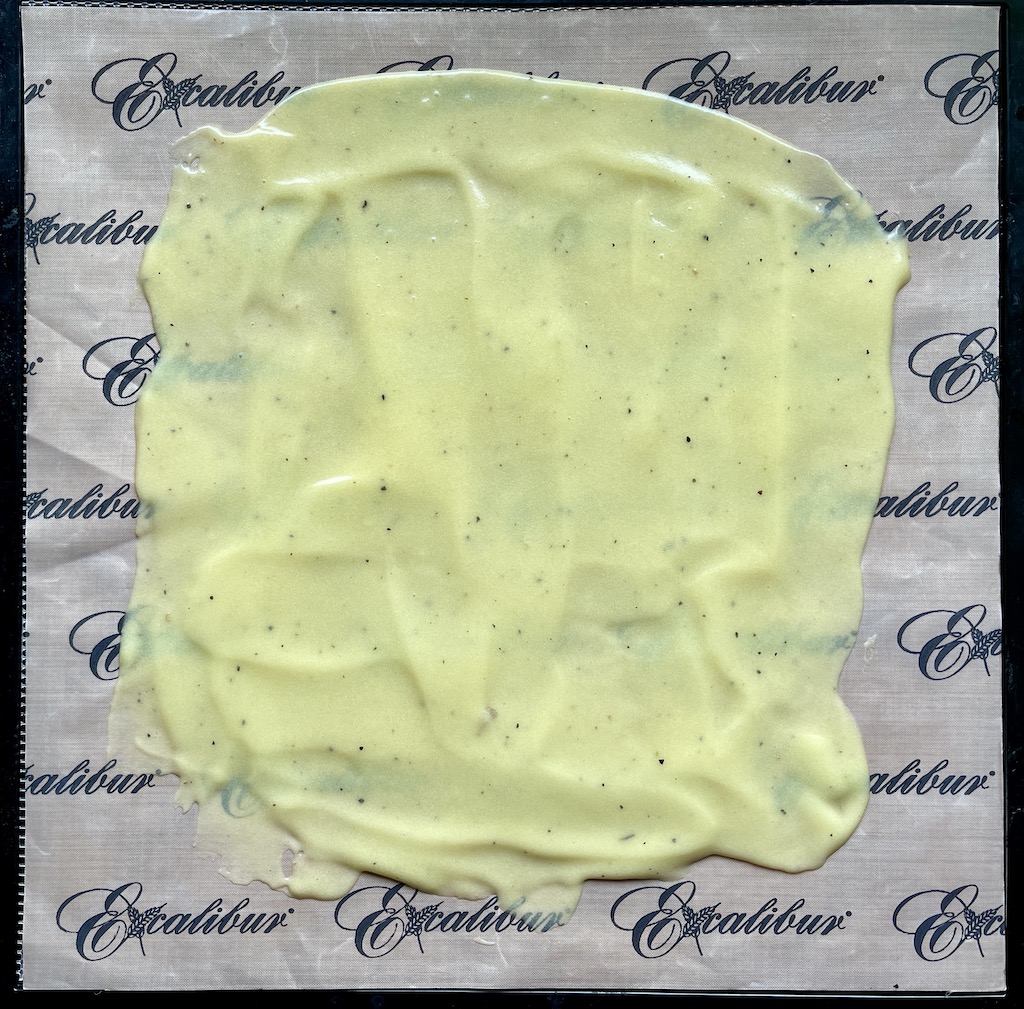
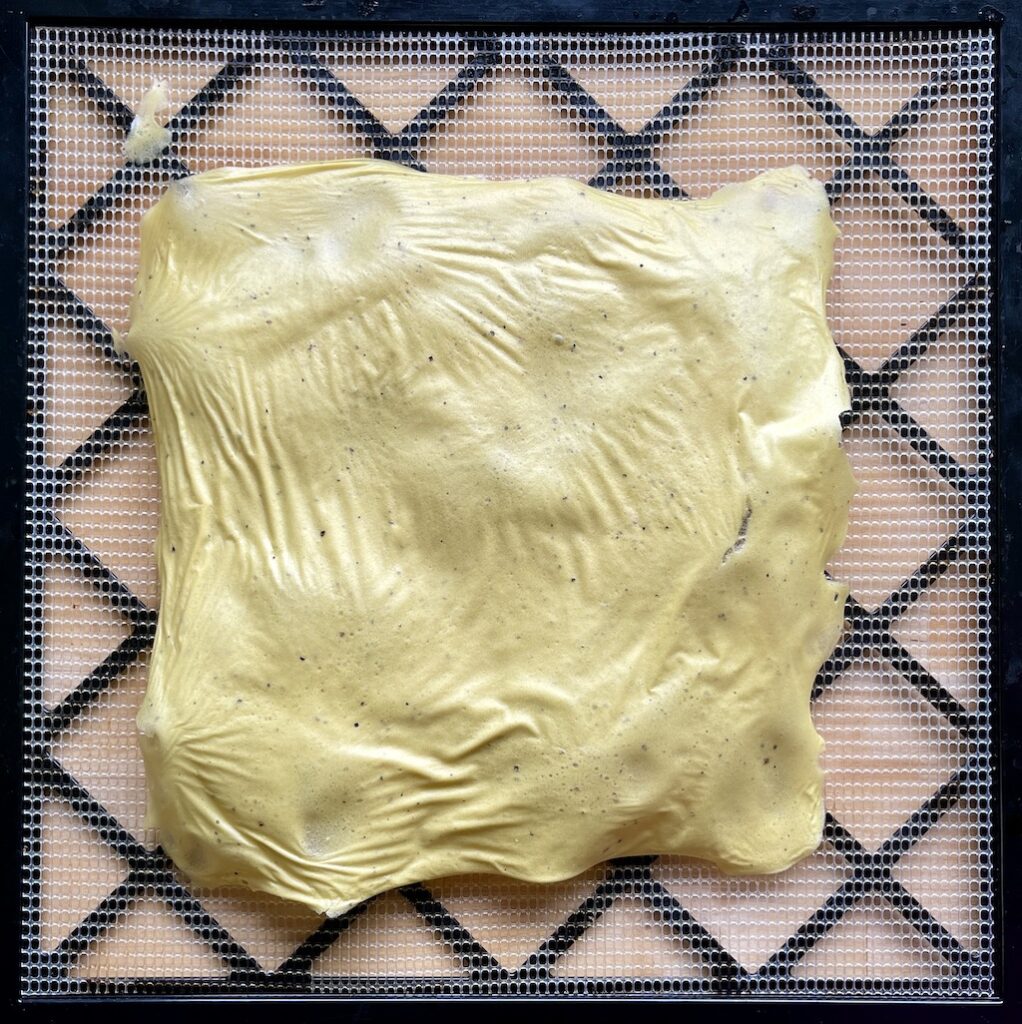
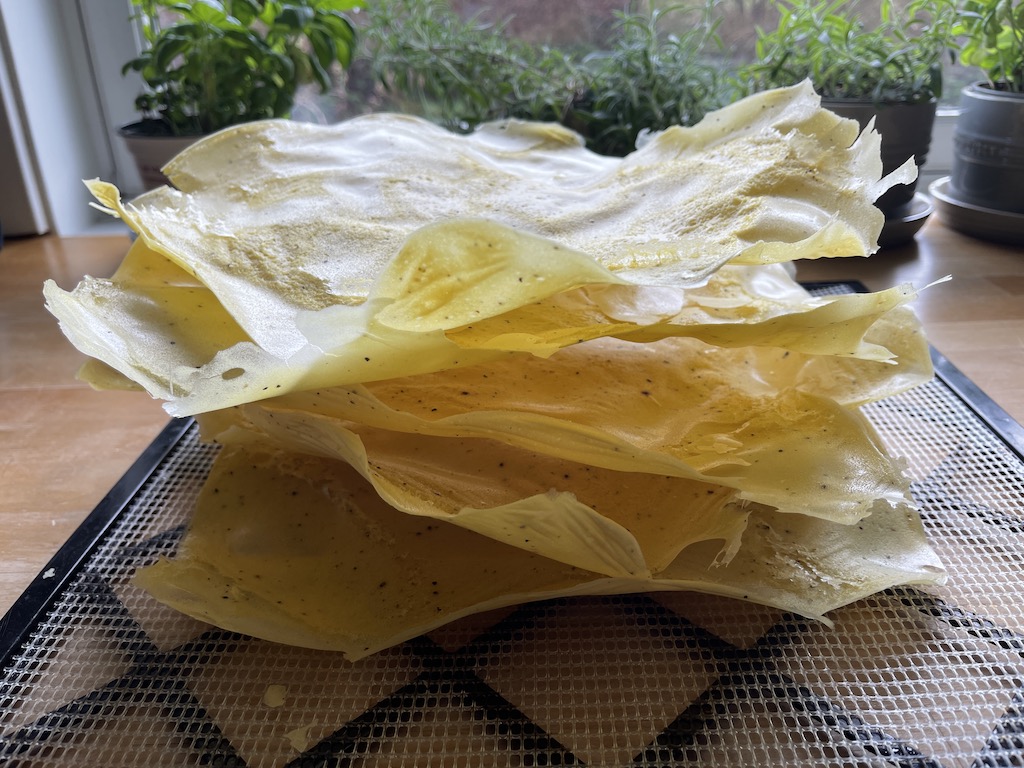
Drying frozen vegetables
You can dry both fresh vegetables and vegetables from the frozen section. These vegetables are already blanched, so you can place them directly on the drying trays. However, if you’re planning to use these vegetables for your backpacking meals, I recommend steaming them for 6 minutes before drying. This will help them retain their color and rehydrate better when you’re on trail.
Benefits of drying vegetables
Drying your veggies has several advantages. If there’s a sale on vegetables at the grocery store, you can stock up and dry them for later use. You can also prevent food waste by drying vegetables that might otherwise spoil before you can eat them. And, when you’re out camping, dried veggies make for a convenient and tasty meal option!
Useful links
publication date:
May 11, 2023

